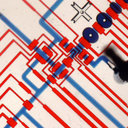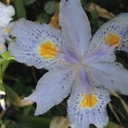UPLC-Q-Exactive Orbitrap/MS-Based Lipidomics Approach To Characterize Lipid Extracts from Bee Pollen and Their in Vitro Anti-Inflammatory Properties.
کلید واژه ها
خلاصه
Bee pollen (BP) is collected by honeybees from flower pollen mixed with nectar and its secretions with extensive nutritional and therapeutic properties. Lipids are known to be critical contributors for the therapeutic effects of BP and vary depending on different plant sources; however, lipid profiles of BP are not available. Here, an UPLC-Q-Exactive Orbitrap/MS method was established for comprehensive lipidomics analysis of BP derived from three major nectar plants (Brassica campestris L., Camellia sinensis L., and Nelumbo nucifera Gaertn.). A total of nine lipid classes, including phosphatidylcholine (41 species), phosphatidylethanolamine (43 species), phosphatidylglycerol (9 species), phosphatidylserine (10 species), lysophosphatidylcholine (12 species), ceramide (8 species), diglyceride (27 species), triglyceride (137 species), and fatty acids (47 species), were first identified and quantified in the three BPs. In vitro anti-inflammatory activity was also discovered in the lipid extracts of three BPs, which has potential relevance to the abundance of phospholipids and unsaturated fatty acids in BP. Our comprehensive lipidomics profiling and in vitro anti-inflammatory properties of BP provide evidence for its future application.




